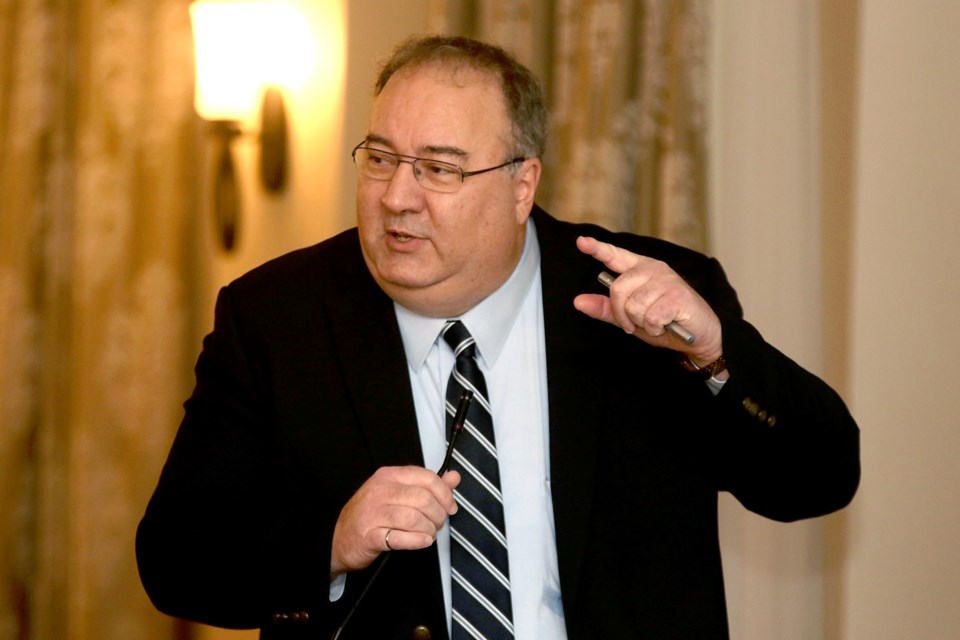THUNDER BAY – The CEO of the Thunder Bay Community Economic Development Commission says contrary to a lot of coffee-house talk, the city’s economic performance has actually been pretty good over the past 15 years.
Doug Murray, who on Thursday unveiled the CEDC’s new three-year strategic plan, said Thunder Bay must focus on repairing its reputation, making the community more welcoming for everyone and find ways to stimulate population growth to fill an expected increased need in skilled trade jobs surrounding the mining, forestry and manufacturing industries.
Over the past 15 years, starting in 2003, the city lost 5,931 jobs, but 8,035 new jobs were created over the same period of time, a net gain of 2,102, representing a four per cent hike.
“We’ve managed to move ahead through some pretty interesting times. The great recession whacked us pretty hard and we’ve been able to pull back to where we were and now we’ve increased the jobs from where we were in 2003,” Murray said, after presenting his plan to business and community leaders at the Prince Arthur Hotel.
“Not a lot of communities have the internal strength to be able to pull out from that, so I’m happy with that.”
Finding that population growth is the biggest single economic issue facing the city.
The good news is that more people seem to be moving into the community than leaving, prompting U-Haul to consider setting up a base in the city as a result.
But as Thunder Bay’s population ages, businesses and government services, which fill eight of the top nine spots on the city’s largest employer list, replacements must be found. That’s just to maintain the status quo.
The city faces plenty of challenges to attract and retain skilled workers, from location to racism that must be overcome to make it happen.
“I think that’s the key message to everybody that lives in Thunder Bay, to treat everybody with respect, but we also have to welcome everybody that comes here because we need help from the point of view of trying to increase the population,” Murray said.
“We have businesses that are short of people in Thunder Bay right now and I wouldn’t even want to guess, but there are a lot of jobs that are going unfilled in Thunder Bay right now.”
Murray said the city has plenty to offer people from a quality of life standpoint, starting with an average housing cost of about $217,000.
“I feel sorry for some of the people in Toronto. They never own a piece of grass underneath their own feet, because at $800,000 to $1 million a house, I sure wouldn’t want to carry that mortgage payment,” Murray said. “That’s available in Thunder Bay.”
Murray said while there is plenty of available industrial land in Thunder Bay – more than 2,300 acres along the waterfront and at Innova Park – residents shouldn’t expect the community to be able to attract large manufacturing plants, mainly because of the city’s location.
That still leaves plenty of opportunities in the smaller manufacturing field.
Murray also plans to place a high priority on helping Bombardier maintain its presence in Thunder Bay. The lone private-sector company in the top nine job providers, Bombardier faces an uncertain future, with contracts running out as soon as the end of 2019 and nothing on the horizon to replace them. The company employs 1,100 people at present time.
“That’s a key component of our economy. It’s been here for over 100 years. I’d like to see it for another (100 years). It’s going to change, things are always going to change, but it’s an effort we’re putting into.”
Murray said the forest industry won’t return to 2003 levels, but with value-added products making it viable again, it could have a major impact on the local economy once again.
He added the CEDC is working with two hotel groups interested in building a couple more facilities in the city.
